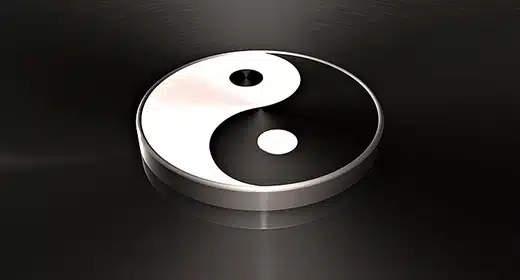by Jo Brown: Our third child was a quirky girl, into gymnastics, baking, music…
She liked things requiring new outfits. She was keen on Disney princesses. She had some particular passions — fluffy clothing for a while, a collection of handbags, cast off heeled shoes, models of movie characters.
She had always found it difficult to make close friends, often feeling left on the side-lines when she was at primary school. Being studious and rather too demanding of devotion put some potential friends off. And starting secondary school was tough. The other girls were often unkind and our daughter increasingly found that her personality, appearance and preferences all fell short of their expectations. Girls seem to live in a phone-shaped goldfish bowl these days. There was a lot of mockery.
Along came puberty, with its painful and chaotic periods and unwelcome male interest in developing breasts. One boy who became a close friend for a while, and a bit of a crush. But he was handsome and sporty and popular — and had his pick of the girls. Our child was not a competitor. Then the self-harming began.
I was told by the school about the cutting — a senior teacher called me at work — handing over the problem rather than offering any solutions. The alarm had been raised by other pupils, although efforts were being made to hide it from adults. I would find blood on hidden pieces of fabric, and she would wear loose, long sleeved clothing even on hot days. We asked our daughter gently about what was troubling her but encountered only defiance and hostility in response. I tried to hide sharp things that I found in her room, but a house has plenty of objects that can be adapted for the purpose, even cut up drinks cans.
I repeatedly tried to get help. I rang our GP and we visited one evening with a doctor kindly staying late for us. I was left outside the consulting room. I don’t know what was discussed, but there was something conspiratorial in the air when she came out. We engaged with a kind but unprepared school counsellor. She encouraged me to contact CAMHS — the NHS child health service. We were triaged through a written form and a brief telephone call, and eventually informed that we did not make the grade to be seen, given the strain on services. I tried several private therapists but my daughter rejected them one by one after the first appointment. They were, I think, trying to present a bit of challenge to the narrative in a way that was not acceptable to our child.
During this time Covid struck, along with its successive lockdowns. For long periods, pretty much all healthy interaction, exercise, productive busyness went out of the window. We managed some outdoor activity together for a while. But for the most part, children were forced to live online for school, extra-curricular activities, social interaction and entertainment. It is hard to stay on top of what your children are viewing online. They know clever tricks about switching screens to homework when a parent enters the room. They run rings around adults. Sure, I used the internet service provider’s system to block some websites, but many have a mixture of acceptable and unacceptable content and it was hard to make any impact.
Then, in one of the brief gaps between confinements, we visited friends. They live in a city with undisputed liberal credentials, unlike our small-town backwater. Their daughter of a similar age was also troubled. They were going through a torrid period of domestic violence and a broken relationship. Always combative, the other girl was aggressively disruptive this time, and wore low cut tops and a short skirt that were troubling to see on someone of 13. The two girls spent time closeted together, whispering, discussing and sharing online material. For a while after that visit, our child made an attempt at glamour, which involved wearing provocative underwear and engaging in self-conscious preening. She drifted further away, leaving us facing a closed bedroom door, aggressive swearing and refusal to engage.
When I saw her phone and computer, I occasionally glimpsed online threads of kids who were identifying as trans. A lot of them were boys or young men. These were full of self-congratulatory stories of so many months on cross-sex hormones along with sexualised selfies. She showed me videos uploaded by adult trans people. They explained their personal journeys as straightforward, beautiful, attractive.
It seems that a trans identity is offered to kids these days as a way out of their confusion and misery. All of us, or at least everyone that I have been close to, can remember our adolescence as difficult years. Feeling unacceptable, substandard, not cool enough. We struggled, were unhappy, but eventually found our way through. In my case it was through academic success, for my sister, sport. A close friend turned to music. What we did not have were people whispering to us in our bedrooms that our gender identity was the problem and changing it the solution.
For our child, not being a girl had never been a possibility. All that dressing up and dancing around, the playing with make up and the hilarious results — she enjoyed it all.
But after several months of following influencers and other distressed kids online, a formal statement of a trans identity came in the form of a nicely put-together document sent by email, complete with illustrations. She placed herself somewhere between the middle and the boy end of a continuous line. The language was not hers. It was full of Americanised terminology, and was clearly copied across from materials helpfully provided by someone else. The mother of the girl we had visited in the city told me that her daughter was doing the same thing – apparently she was literally now a boy. I spoke to the younger members of my family and a few close friends. All were puzzled and didn’t know what to say. The general “be kind” approach prevalent in our society was there, but mixed with a kind of silent bafflement.
I tried explaining to my child that I had a different point of view, that I believe in both biological reality and women’s sex-based rights, and just didn’t see how all this had appeared pretty much from nowhere. It did not go well. We as parents were classed as “cis transphobes” whose views were irrelevant, outdated and just wrong.
I did not want to go along with it, but we were in a dark place then. Instead of procuring the sexy push-up bras, I was buying expensive breast binders from a US company. Only clothing from the boys’ or men’s sections could be worn – the baggier the better. I still cannot explain the move from being sexy to denial of being female at all, expect perhaps as an admission of defeat as an attractive teen girl.
She was still cutting herself and we were desperate for it to stop. At that point, we didn’t care what clothes she wore or what hairstyle she wanted, and would risk the potential back problems and ribcage damage caused by the binders. But the more I looked into the trans issue the more worried I became.
I contacted organisations that profess expertise on the subject. But the trouble is, they nearly all point in one direction. You find Mermaids, the UK trans charity, on the first search. I called them to discuss binders and whether they were safe. That conversation was all about affirming my daughter’s decision and advising that the potential harm of not doing so was much greater than any drawbacks in doing so. They suggested getting on the waiting list for NHS gender services straight away “as there is a long waiting list”.
Inevitably, I started to question myself: had my instincts about my happy girl been completely wrong, and had she somehow buried a desire not to be female for all of those years? I looked back through childhood photographs. There she was smiling, dancing, laughing, trying new outfits, dressing up. Not always happy, of course, but never in the slightest bit a boy. So I did some more research, and the more I looked into it, the less coherent and responsible it seemed.
The school is not much help. In fact, the school is part of the problem. If my daughter is self-harming or tells them she is very low, they will call me and tell me to access the community mental health services or A&E. They pass the buck. They’re not keen to dive any deeper even though, if anything, they have encouraged the trans identification, whether through fear, or well-meaning and sincere belief. Some staff have used the “born in the wrong body” phrase, which in the context of troubled teenagers is rather like playing with matches in a parched field. They had me in for a meeting, two against one, and essentially informed me that the name and pronouns would be changed across the school by edict. It was all very smiley, but my views on whether this was a good idea were not sought.
The school brings in organisations to talk about trans identities in a positive way, but notably offers no differing points of view. I have tried to express concern about the approach but have gained little traction. In reality, the school seems to contain other perspectives, with some staff clearly not on board with the full agenda, although apparently afraid to say so.
Where are we now? I do not use the new name and pronouns myself, but I cannot use the old ones on pain of threats of self-harm or worse. The child herself seems to be happier, adopting a gender non-conforming style of dress – more Artful Dodger than Arnie. She is far from masculine though, spending most of her free time with other girls, on what would widely be considered feminine interests — such as trying new recipes, drawing, and watching or reading teen romances. The earlier attempts at ostentatious belching and man-spreading seem to have subsided. I get asked about outfit choices (this baggy hoody or that one) and what to say to a boy who is a bit too keen to meet up outside school.
What is particularly baffling is why a mental difficulty that suddenly arises in adolescence is treated as a newly revealed truth, rather than a problem to be worked through and overcome. Many of these girls are struggling mentally, and indeed some are diagnosed with autism. If my child had an eating disorder, I do not think I would be encouraged to order diet books and seek gastric surgery. Youth has always found ways to challenge the aged. Is this, perhaps, a young-versus-old frontier, and a new way to challenge sex-based roles and expectations? And yet it has taken on a certain kind of holiness.
Many are building their careers on this issue, both in the medical profession and in the burgeoning diversity industry. But for those of us who are not paying attention, it is time to wake up. For those involved from schools, clinics, support service I ask that, before diving in with affirmation, social transition and medical intervention, you just consider asking parents whether the questioning child has ever in the past shown discomfort with their sex. Ask them if the child was troubled and unhappy beforehand. Ask them if the child has been deep in an online rabbit-hole.
School-leaders, ask yourselves why you have an annual month of excitement about the sex and gender diversity alphabet and precious little else the rest of the year on other issues like physical and mental disability. For those making and implementing policy, ask yourselves whether you are being told the full story by the diversity industry, and why the voices of concerned parents and detransitioners are being widely ignored. For parents with young children, especially girls, do not assume that your child will not be affected.
If all of this turns into generally non-conforming quirky behaviour in adulthood, then I will be highly relieved and move on. But there is the widespread promotion out there of hormonal treatment, mastectomies, sterilisation and “bottom surgery” to gender questioning teens as aspirational next steps. Some parents clearly feel that this is right for their child. But for those of us who don’t, the prospect is a frightening one. Early on in this journey our daughter made some glib statements about top surgery (she is, in fact, horrified by a visit to the dentist). Now, we don’t discuss any of this. I admit that I avoid the whole subject to avoid any more harmful rows. I think I have made clear that I love her, but that I disagree with the analysis and don’t support the solution
I grew up in the Seventies and Eighties. We knew as girls that life was tough but that it was our biology that kept us down, and while we were striving to change that, we knew it would be a long fight. I knew that being raped at 16 was entirely down to my biology as a transiently useful vagina-haver, lacking the strength and confidence to fight back. I knew that the handicapping of my professional career in my 30s was due to my biology as a uterus-haver and chest-feeder. I was aware that the lasting damage to my pelvic floor from a forceps delivery was tied to the biological role of birthing parent. I know that my current invisibility is due to my biology as a woman in menopause.
For now, I am putting one foot in front of the other, avoiding certain teachers, firefighting arguments at home, trying to demonstrate love while clinging on to my own sanity and understanding of the world. But my daughter’s identity struggle has reawakened my interest in feminism, quietly folded away at the end of the 20th century. It seems now that some of those uncompromising voices from the “second wave” still need to be heard. How I would love for my child, and many other young girls and women caught up in the same way, to remember the feminism their mothers and grandmothers fought for and thought that they had won.

















































